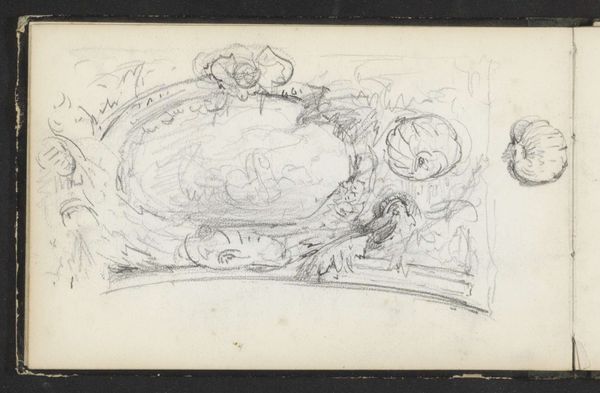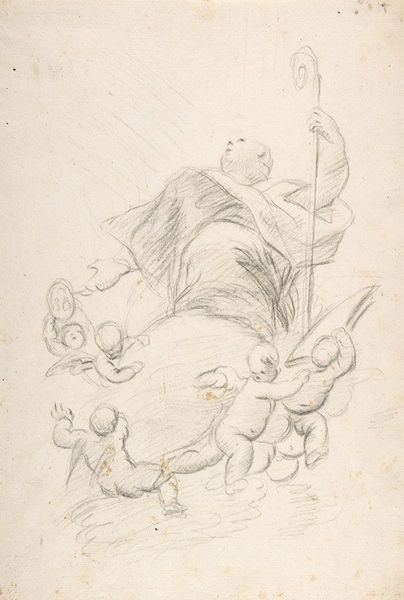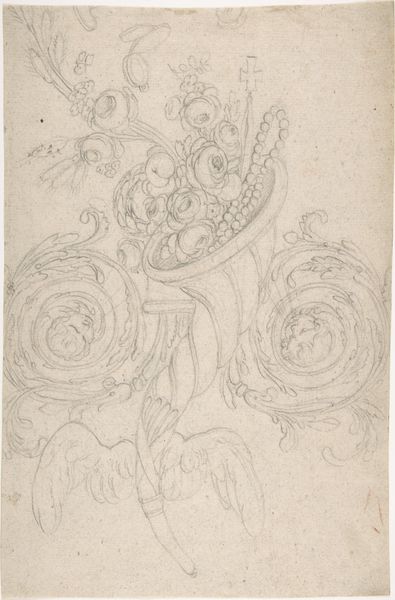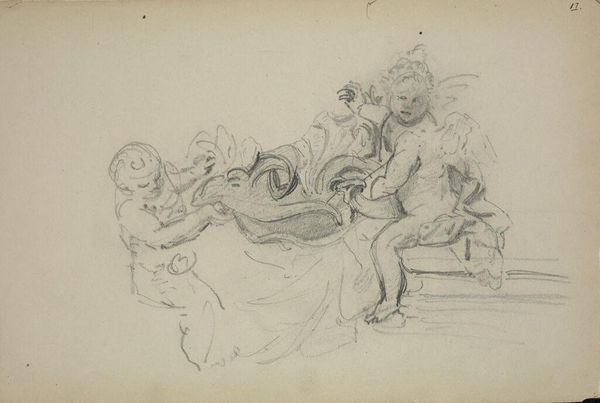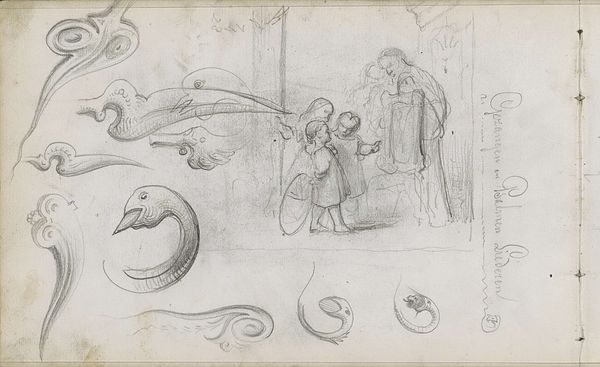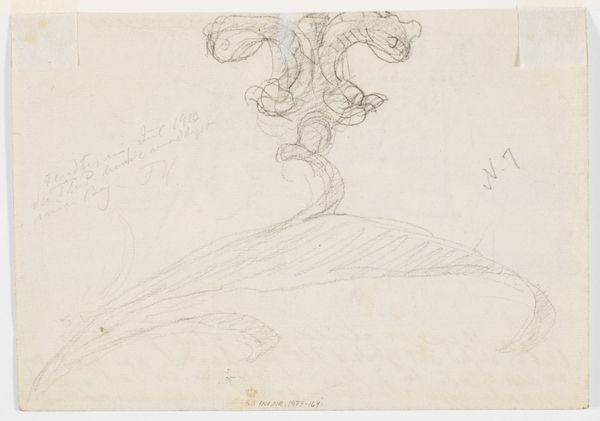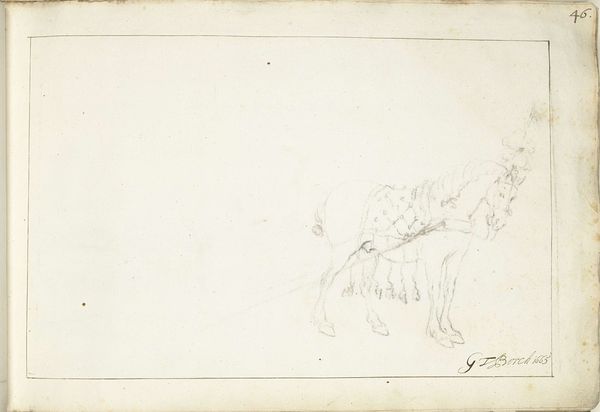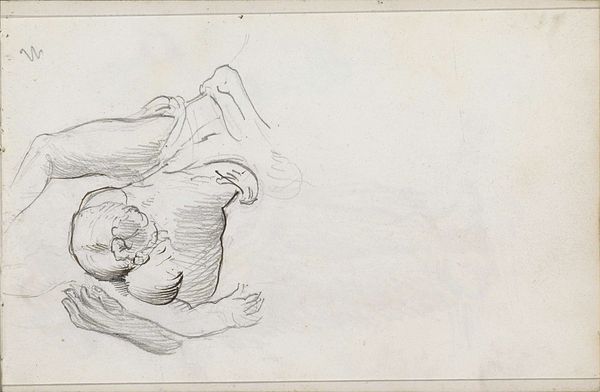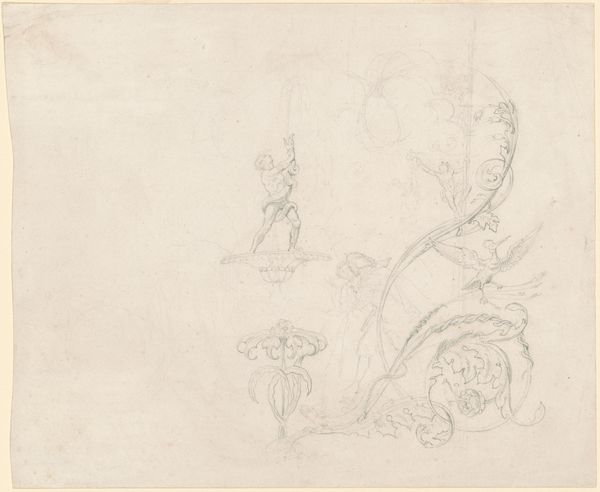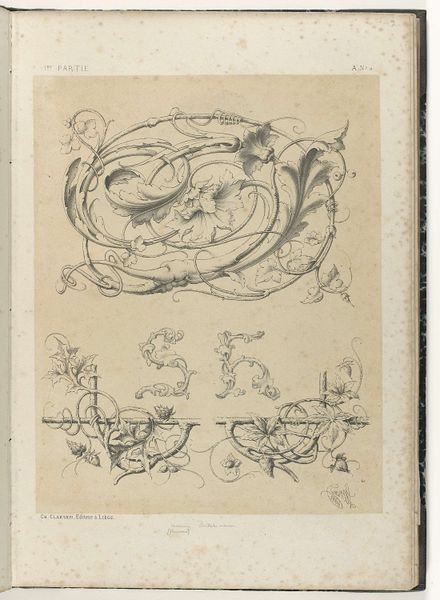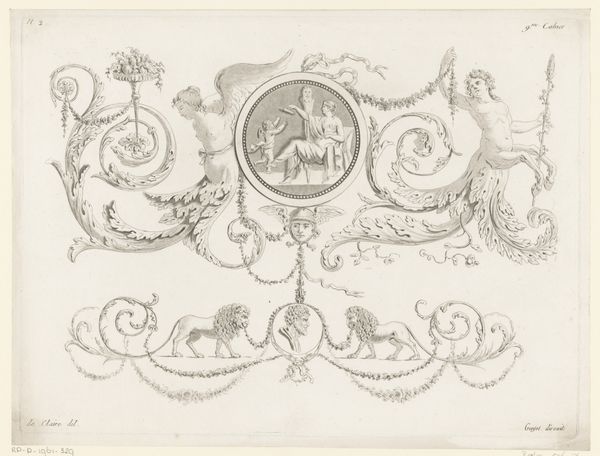
Ontwerp voor kamerversiering met een paneel met een bacchante op twee voluten 1767 - 1823
0:00
0:00
drawing, pencil
#
drawing
#
neoclacissism
#
allegory
#
pencil sketch
#
figuration
#
pencil
Dimensions: height 216 mm, width 255 mm
Copyright: Rijks Museum: Open Domain
Curator: This delicate pencil sketch presents an "Ontwerp voor kamerversiering met een paneel met een bacchante op twee voluten," or Design for room decoration with a panel of a bacchante on two volutes. It’s attributed to Abraham Meertens and thought to have been created sometime between 1767 and 1823, demonstrating a clear interest in neoclassicism. Editor: My immediate response is one of architectural lightness. The muted grey pencil lines create an airy, almost ethereal vision of celebration. You can feel the envisioned material ornamentation of a room’s adornment—as well as the intended festive mood! Curator: Absolutely. Bacchantes, of course, were the female followers of Bacchus, the Roman god of wine, freedom, and ecstasy. I'm particularly intrigued by the potential symbolism embedded within this piece. A bacchante, often depicted as a figure of unrestrained revelry, occupying domestic spaces offers a rather pointed statement about the permissible roles of women and perhaps, wider society's view of feminine liberation. Editor: I see that too. And yet, let's not forget the actual labor and material production at play. The ornamental designs were certainly handcrafted using accessible materials. Looking closely, one imagines the skilled hand replicating motifs on perhaps plaster, perhaps stucco. It all speaks to class, taste, and a burgeoning culture of consumerism that privileged ornamentation. Curator: You raise such an important aspect – it goes far beyond aesthetics. It evokes considerations of class in consumption, yet on another level it also emphasizes the prevailing ideologies around identity, social class, gender, and its representation within these private decorative schemes. The neoclassical style was much favored to recall back the classical ideals! Editor: Agreed. I guess seeing it reminds me of our current engagement with artisanal practices, particularly where the line blurs between art and craft in contemporary installation, design or construction. Curator: This definitely pushes us to think further beyond first impressions. It serves as a vital lens for perceiving both the history of gender representation and artistic craftsmanship during this unique historical moment. Editor: Right! I see an invocation and almost challenge traditional categorization of skills while celebrating both artistry and the socio-economic value embedded within artistic work.
Comments
No comments
Be the first to comment and join the conversation on the ultimate creative platform.
